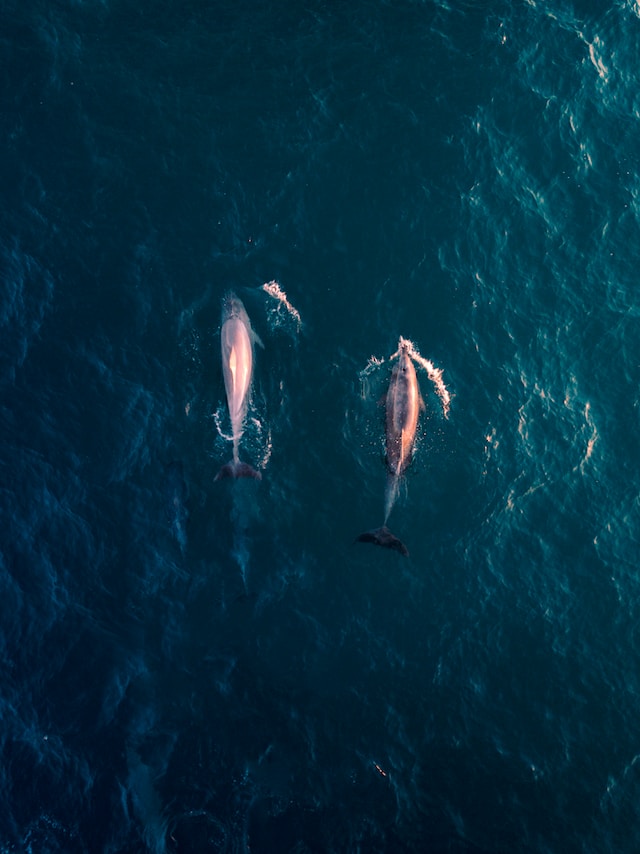Last updated on October 10th, 2023 at 10:43 am

River dolphins are remarkable aquatic mammals found across freshwater rivers and lakes worldwide, adapting well to their environments while possessing distinct diet preferences for each area they reside in.
In this article, we will look into the diets of river dolphins found in rainforest environments and on Amazon rivers.
Additionally, we will explore what do river dolphins eat, discuss their friendly characteristics; and glean information regarding their habitat and conservation status.
Table of Contents
- 1 What Do River Dolphins Eat?
- 2 What Do River Dolphins Eat In the Rainforest?
- 3 How Do River Dolphins Find Food?
- 4 What Do Pink River Dolphins Eat?
- 5 Are River Dolphins Friendly?
- 6 Where Does The Amazon River Dolphin Live?
- 7 Are Amazon River Dolphins Endangered?
- 8 Frequently Asked Question (FAQs)
- 9 Conclusion
What Do River Dolphins Eat?
River dolphins feed on fish, shrimp, crabs and other marine creatures found in aquatic environments; Amazon River Dolphins have even been documented consuming piranhas!
River dolphins are carnivores whose diet depends on both species and environment of where they inhabit the river they reside.
Below are examples of what different species of river dolphins eat:
Amazon River Dolphin: These aquatic mammals feed on various fish species such as piranhas, catfish and mullet; in addition to shrimp, crabs and turtles.
Ganges River dolphin: These aquatic mammals enjoy eating mostly fish, although they will also eat shrimp, crabs and snails as food sources.
Indus River dolphin: These aquatic mammals consume similar diets as Ganges River dolphins; however, in addition to feeding on freshwater stingrays they also eat freshwater crabs and shrimp.

What Do River Dolphins Eat In the Rainforest?
Forest river dolphins feed on more than just fish, crustaceans, and mollusks; their diet also includes frogs, insects and reptiles for sustenance in order to sustain an appropriate and nutritional diet.
Their diverse food source offers them plenty of delectable choices which enable them to keep a balanced and nutritional diet.
The rainforest is an engaging habitat filled with diverse and exotic species – among which are river dolphins.
River dolphins have successfully adapted their diet in this rich ecosystem to take full advantage of available resources in their region, which have allowed for their flourishment and longevity.
How Do River Dolphins Find Food?
River dolphins possess extraordinary navigational skills that enable them to locate food easily.
Utilizing echolocation – a form of biological sonar system – these intelligent aquatic beings emit short clicks before listening for returning echos.
By decoding these signals correctly, they can identify location, distance and size of nearby prey items.
River dolphins possess remarkable echolocation skills that enable them to navigate murky waters and track prey even with limited visibility. Thanks to echolocation, river dolphins can efficiently locate food sources.
What Do Pink River Dolphins Eat?
They are carnivores consuming fish such as piranhas, catfish, characins and tetras as their diet; in addition they feed on turtles, crabs and shrimp for sustenance.
Pink river dolphins (boto or bufeo), commonly found along the Amazon and its tributaries. Opportunistic feeders, pink river dolphins will devour anything available when hungry.
These predators have been observed feeding on small mammals like capybaras or caimans; as well as foraging for food such as dead fish.
Pink river dolphins consume 2. 5% of their bodyweight daily in food. Hunting together and using echolocation, these aquatic mammals typically herd fish towards shallow areas so that they may easily be captured.
Are River Dolphins Friendly?

River dolphins have long been celebrated for their warmth and friendliness, winning hearts both locals and researchers alike.
While individual species’ social behaviors and interactions differ considerably, these marine mammals typically exhibit friendly traits.
River dolphins have often been observed engaging in playful behaviors with one another or, on rare occasions, human beings – contributing to their reputation of being friendly creatures.
Where Does The Amazon River Dolphin Live?
The Amazon River dolphin, popularly referred to as boto, resides primarily within freshwater rivers and tributaries within South American rainforests known as Amazonia.
These mesmerizing creatures span across several countries, such as Brazil, Colombia, Peru and Bolivia.
These mesmerizing aquatic organisms have successfully made themselves at home within the complex water systems of Amazonia where they carve out habitats from dense vegetation and intricate river networks to thrive and survive.
Are Amazon River Dolphins Endangered?
Yes. Amazon River dolphins are officially considered endangered due to various threats they face and an observed drop in population, sparking concerns regarding conservation status.
Human activities, including dam construction, pollution, habitat loss and accidental entanglement in fishing gear pose substantial threats to these magnificent animals.
As such, the International Union for Conservation of Nature (IUCN) recognizes Amazon river dolphins as being endangered species; therefore conservation efforts and increasing public awareness must continue in order to guarantee long-term survival of this beautiful creature.
Frequently Asked Question (FAQs)
Do River Dolphins Eat Plants?
No. River dolphins are predominantly carnivorous and do not consume plants as food sources.
What Is The Lifespan Of A River Dolphin?
River dolphins typically live 20 to 30 years depending on species and environmental factors such as habitat conditions or predation risks.
Can River Dolphins Survive In Saltwater Environments?
No. River dolphins have evolved specifically for freshwater environments and cannot survive in saltwater environments.
See Also: Do Dolphins Live in Saltwater or Freshwater? Aquatic Dwellings
Conclusion
River dolphins provide us with a window into the complex ecology of freshwater ecosystems through their unique diets and adaptations, such as preying upon various prey items to secure sustenance for themselves and secure future meals.
Their intelligence allows them to adapt with changing environments while successfully hunting down food sources – an example of an amazing skill found only among dolphins!
However, it is essential for us to recognize the threats they face and act to conserve these remarkable species. By conserving habitats and raising awareness we can contribute towards their preservation as part of natural heritage for future generations.

Mr. Das, a certified pharmaceutical scientist, holds a Bachelor of Science in Pharmaceutical Sciences and passionately contributes to dolphin conservation as a member of the committee in Bangladesh.


